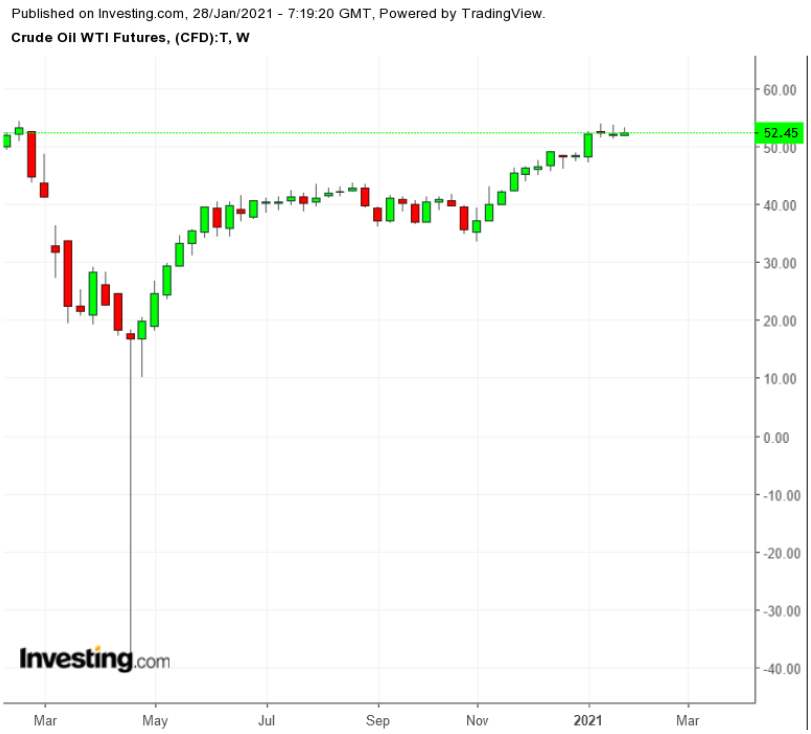
Energy News Beat Publishers Note: Great opinion and article from Ellen R. Wald PH.D. at Investing.com. She is has over 274 articles, and one to follow.
On Wednesday, the Biden administration issued an executive order directing the Secretary of the Interior to pause all new oil and natural gas leases on public lands and offshore waters and to review existing permitting and leasing practices. What this means is that for an indefinite amount of time, the federal government won’t allow any new oil and gas projects on federal land and in federal waters. (Native American tribes and their lands were later exempted from this executive order).
There is no doubt that if this order remains in effect it will limit U.S. production opportunities, which will send prices higher at some point. The question is when we will start to see an impact on oil prices from this executive order.

The assessment is also complicated by global oil demand and the economic impacts of pandemic lockdowns.
Over the past few days, I’ve spoken with several people in different positions in the oil and gas industry to try to figure out when we can expect this policy to impact prices. The conclusion I’ve reached is that no one really knows and very few people are even willing to guess when prices will start to rise as a result.
Currently, about 22% of U.S. oil production and 12% of natural gas production takes place on federal land and water, according to the American Petroleum Institute. Biden’s executive order applies only to new leases within those categories. It is expected that new permits will still be issued for leases already acquired. The U.S. won’t see a decline in production due to this new policy until new production is needed to make up for drops in old production.
When that will happen? No one knows for sure.
Though a date when this executive order might begin to impact U.S. supply cannot be identified yet, here are some signs for traders to watch for:
Art Berman, a geologist and consultant at www.artberman.com said he sees that irrespective of Biden’s executive order, “U.S. oil production will probably decline to 9 million bpd or less before the end of 2021 because of low drilling activity.” He believes that, “Restricting drilling further will make this worse.” (For reference, according to the EIA, the U.S. produced 10.9 million bpd of oil last week).
On the other hand, energy markets expert Anas Alhajji said that the oil industry was well prepared for this regulation and that it “accumulated a large number of permits” in preparation. However, he feels that:
“A complete ban on drilling on federal land and in the Gulf of Mexico will not have an impact on U.S. production in 2021.”
According to his analysis, the impact on production from the lower 48 states will be limited, and “any decline will not show until 2023 and mostly from the Gulf of Mexico.” If the ban on new offshore drilling holds up (which he is skeptical about), then:
“Future impact will come from the sharp decline in production in the Gulf of Mexico, not from the lower 48, simply because of high decline rates with no replacement.”
The most important factor in oil prices right now is still the global demand picture, which depends on when economic restrictions are relaxed. However, assuming demand does return to its previous levels at some point, Biden’s policy is going to hamper U.S. supply eventually.
It may not be for a year or more, but this policy—and others that may be forthcoming—will be important for traders to consider.
The post Industry Insights on if Biden’s Federal Drilling Ban Raise Oil Prices? Here’s What To Watch appeared first on .